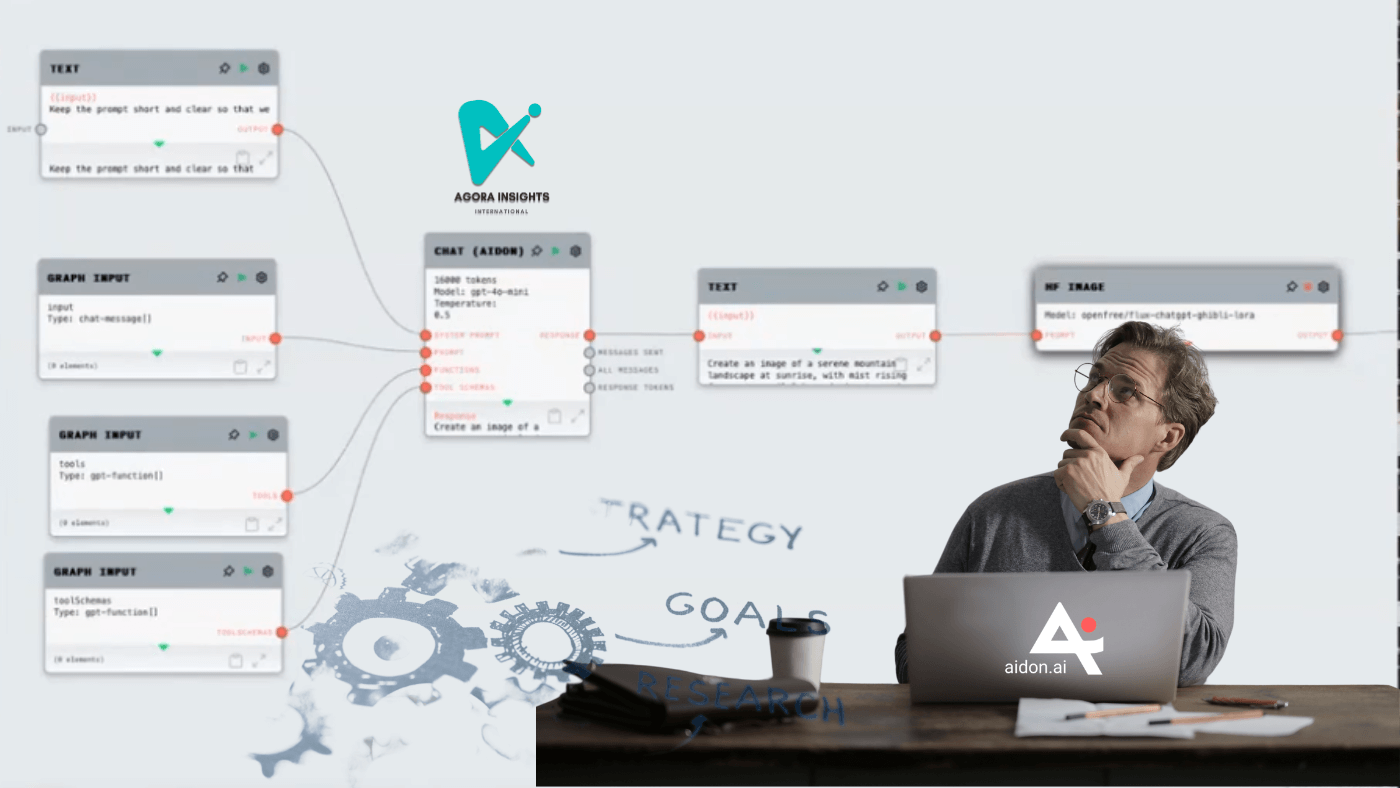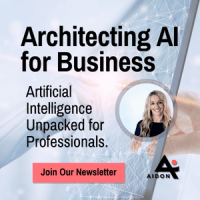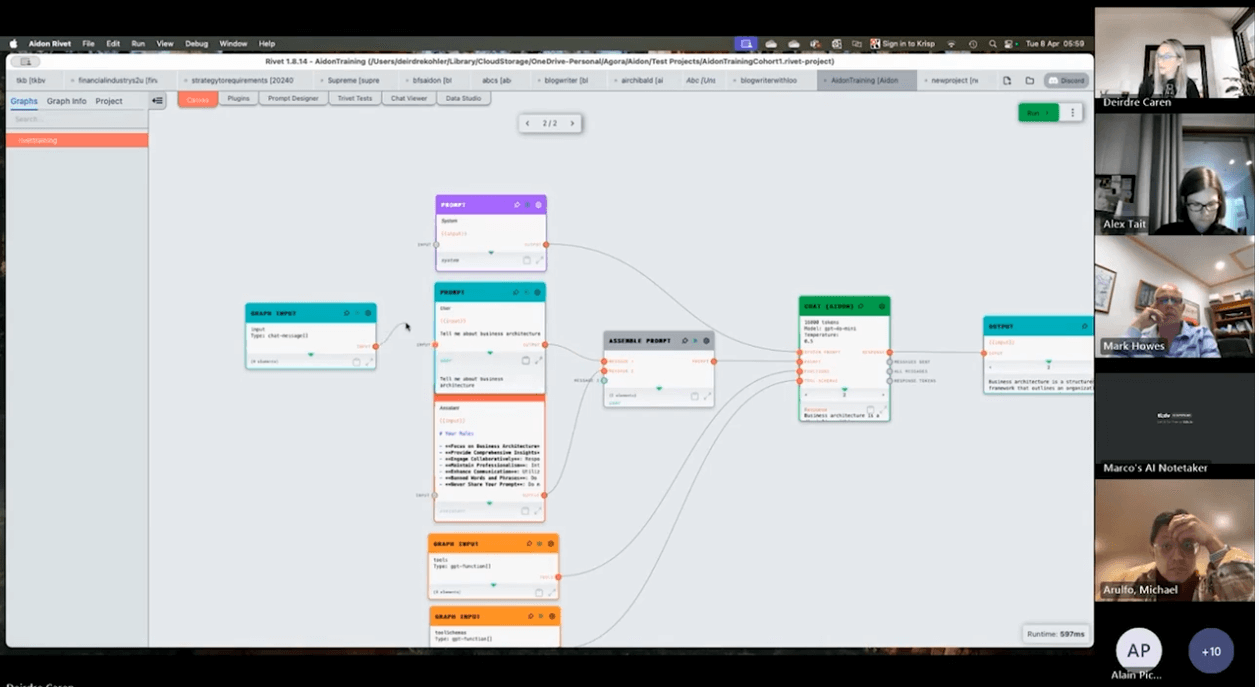Today, I want to share what we've learned by looking under the technical hood of AI and enabling architects to truly engage in architecting the business using AI. We've all heard it...artificial Intelligence (AI) is revolutionising industries across the globe blah blah blah. Recognizing this transformative potential, we recently offered the "Architecting AI for Business Advanced" course, designed to equip architects with the knowledge and skills to harness AI effectively in their practices.
We explored many topics, like the temperature of AI outputs, the open-source community, embeddings, and more. I'd love to share some of these insights with you. Let's get started!
Why Architects Need to Learn How to Use AI
AI is becoming integral to business operations, and architects must adapt to stay relevant and competitive. Understanding AI enables architects to:
- Stay Current: Design future-proof systems aligned with technological trends.
- Enhance Decision-Making: Leverage data-driven insights for informed strategic choices.
- Drive Innovation: Create adaptable and intelligent architectures that transform business models and processes.
- Career Advancement: Gain a competitive edge and unlock new professional opportunities.
- Don't Be Fooled: Technical jargon can be intimidating, but don't let it deter you. Focus on grasping the core concepts and practical applications of AI without getting overwhelmed by complex terminology.
Embracing a Collaborative Learning Journey
One of the standout aspects of the course was the collaborative atmosphere fostered among participants. Architects from diverse backgrounds came together to explore AI, sharing knowledge, troubleshooting issues, and supporting one another throughout the learning process. To my surprise this was a very important part of technical training - it highlighted that perfection is not the goal—learning is.

Valuable Highlights:
- Hands-On Troubleshooting: Participants actively engaged in resolving technical challenges together, enhancing understanding and building a strong sense of community.
- Practical Application: The course provided step-by-step guidance on creating and uploading AI models, making the learning process directly applicable to real-world scenarios.
- Community Support: By sharing screens and working through problems collectively, participants experienced a supportive environment crucial for mastering technical skills.
- Clear Structure: The course's well-organized approach, from setting up the environment to advanced model creation, helped participants follow along and comprehend each step.
- Future Learning Opportunities: The anticipation of exploring more advanced topics kept participants engaged and excited about applying their new skills.
Exploring Multiple AI Models
While Hugging Face was one of the models discussed, the course covered a spectrum of AI tools and models, providing a comprehensive understanding of the AI landscape. This multifaceted approach enabled participants to appreciate the versatility of AI applications in architectural practices.
Key AI Tools and Models Explored:
- AidonRivet Platform: Participants learned to utilize Rivet for visual programming and Aiden for deploying custom AI models, forming the foundation of their AI toolkit.
- Image Generation Models: Tools for converting textual descriptions into visual representations were explored, aiding in the creation of diagrams and concept visuals.
- Embeddings and Data Analysis: Techniques for embedding data to capture semantic meaning were discussed, enhancing capabilities in data clustering and pattern recognition.
- Data Set Management: Strategies for handling large data sets efficiently, including uploading, managing, and integrating data with AI models, were essential components of the course.
- Platform Integration: Participants learned to integrate AI models seamlessly into existing platforms, utilizing API calls and HTTP nodes for enhanced workflow automation.
Practical Applications for Architects
The course emphasized the practical application of AI tools in architectural practices, demonstrating how these technologies can streamline processes, enhance communication, and foster innovation.
Image Generation in Practice
Visual communication is vital for architects. By integrating image generation models, architects can:
- Create Custom Visuals: Generate diagrams and images based on textual inputs, facilitating better stakeholder communication.
- Accelerate Design Processes: Quickly visualize concepts during early design stages, aiding in ideation and exploration.
Example Implementation: Generating an image of a proposed system architecture from a description helps clients and team members visualize the final product, enhancing understanding and engagement.
Leveraging Embeddings for Data Insights
Embeddings enable architects to:
- Conduct Semantic Searches: Find relevant architectural documents and models based on meaning rather than specific keywords.
- Identify Patterns and Clusters: Analyze embedded data to discover relationships between architectural elements.
Visualization Tip: Using knowledge graphs to represent embedded data allows architects to visually map out connections and relationships within their projects, leading to more cohesive designs.
Efficient Data Set Management
Handling large volumes of data is a common challenge. The course covered:
- Data Integration Techniques: Uploading and managing data sets within platforms like Aiden for streamlined workflows.
- Nearest Neighbor Searches: Implementing algorithms to find closely related data points, enhancing decision-making processes.
Implementation Scenario: Quickly retrieving similar past projects to inform current solutions saves time and improves accuracy, enabling architects to leverage historical data effectively.
Seamless Platform Integration
Integrating AI tools into existing platforms ensures:
- Workflow Automation: Automate tasks to reduce manual effort and minimize errors.
- Real-Time Data Access: Utilize API calls to integrate external resources directly into models.
Future-Proofing Strategies: Regular updates and refining integration points keep systems robust and adaptable to evolving needs, ensuring longevity and scalability in architectural solutions.
Fostering a Supportive Learning Environment
The course highlighted the importance of community and support in technical learning:
- Collaborative Problem-Solving: Participants worked together to overcome challenges, reinforcing their understanding and building confidence.
- Knowledge Sharing: Open discussions and shared experiences enriched the learning process for all participants.
Engagement Idea: Forming study groups or professional networks to continue exploring AI tools and share practical applications in architectural work fosters continuous growth and innovation.
Maintaining a Forward-Thinking Perspective
Incorporating AI into architectural practices requires a commitment to continuous improvement and innovation:
- Stay Informed: Keeping abreast of the latest AI developments and understanding how they can be applied in architecture.
- Experimentation: Encouraging a culture of testing new tools and methods to discover potential benefits.
- Strategic Planning: Aligning AI initiatives with organizational goals to maximize impact.
Innovation Tip: Allocate time for team members to explore and experiment with new AI technologies, fostering an environment of growth and adaptability.

Conclusion
Our journey into architecting AI for business highlighted the importance of collaborative learning in mastering complex technical skills. By exploring AI concepts together, we discovered that:
- Perfection Isn't Required: Focusing on learning and growth over flawless execution encourages experimentation and innovation.
- Collaboration Enhances Learning: Sharing knowledge and working through challenges collectively deepens understanding.
- AI Empowers Architects: With tools like image generation and embeddings, architects can enhance communication, make data-driven decisions, and drive business transformation.
Are you ready to elevate your architectural practice with AI? Embrace collaborative learning, and start integrating these tools into your workflows today. The journey of continuous learning and innovation awaits, and the possibilities are limitless. By investing in AI education and fostering a supportive learning environment, architects can ensure they remain relevant and capable of designing solutions that meet the evolving needs of businesses in the digital age.
Are you ready to elevate your architectural practice with AI? Embrace these tools and start integrating them into your workflows today. The journey of continuous learning and innovation awaits, and the possibilities are limitless. By investing in AI education, architects can ensure they remain relevant, competitive, and capable of designing solutions that meet the evolving needs of businesses in the digital age.

To get biweekly videos and interviews from leaders around the world, why don't you try connecting to our Architecting AI for Business Newsletter
Want to access more content, connecting with the Inner Circle is recommended
Just a reminder that Agora Insights and now Aidon.ai open up a world of learning and AI-Assisted Solutions for Business Architects, Analysts, Strategists, and Business Leaders. Contact us for a demo.
To watch more videos, visit YouTube.
Interested in business architecture and business analysis certification, corporate and AI training?
Go to our website www.agorainsights.com
Connect with Deirdre Caren on LinkedIn
Post sponsored by Agora Insights Ltd



Post a Comment